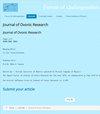Study of eigen frequency In1-xGaxAsyP1-y 1.55 µm VCSEL with SiO2 /TiO2 dielectric Bragg reflector
IF 1.1
4区 材料科学
Q4 MATERIALS SCIENCE, MULTIDISCIPLINARY
引用次数: 0
Abstract
In this work, we focused on investigating the eigen frequency and internal standing wave characteristics of a vertical surface cavity emitting laser operating at a wavelength of 1.55 µm. The design of the cavity involved determining the cavity length, selecting the material for the cavity spacer, and carefully placing the quantum wells within the cavity to achieve maximum overlap with the electric field. In our case, the choice of the dielectric Bragg mirror with SiO2/TiO2 layers helps in achieving high reflectivity and low optical losses. The quantum wells are strategically placed within the cavity to ensure maximum overlap with the electric field. This allows for efficient carrier injection and recombination, leading to laser emission. The specific composition of the quantum wells, In0.54Ga0.46As0.99P0.01 / In0.75Ga0.25As0.55P0.45, indicates the proportions of indium (In), gallium (Ga), arsenic (As), and phosphorus (P) in the material. These compositions are chosen to achieve the desired electronic band structure and emission wavelength. By studying the eigen frequency and internal standing waves in our designed laser cavity, our aim is to understand the resonant modes and behavior of light within the device. This knowledge is crucial for optimizing the laser's performance and improving its efficiency for various applications.SiO2 /TiO2介质Bragg反射器对1- xgaxasyp1 -y 1.55µm VCSEL本征频率的研究
在这项工作中,我们重点研究了工作波长为1.55 μ m的垂直表面腔发射激光器的本征频率和内驻波特性。空腔的设计包括确定空腔长度,选择用于空腔间隔的材料,并仔细地将量子阱放置在腔内以实现与电场的最大重叠。在我们的案例中,选择具有SiO2/TiO2层的介质布拉格反射镜有助于实现高反射率和低光学损耗。量子阱被战略性地放置在腔内,以确保与电场的最大重叠。这允许有效的载流子注入和重组,导致激光发射。量子阱的具体组成In0.54Ga0.46As0.99P0.01 / In0.75Ga0.25As0.55P0.45表明了材料中铟(In)、镓(Ga)、砷(As)和磷(P)的比例。选择这些组合物以获得所需的电子能带结构和发射波长。通过研究我们设计的激光腔内的本征频率和内部驻波,我们的目的是了解器件内光的共振模式和行为。这些知识对于优化激光器的性能和提高各种应用的效率至关重要。
本文章由计算机程序翻译,如有差异,请以英文原文为准。
求助全文
约1分钟内获得全文
求助全文
来源期刊

Journal of Ovonic Research
MATERIALS SCIENCE, MULTIDISCIPLINARY-PHYSICS, APPLIED
CiteScore
1.90
自引率
20.00%
发文量
77
期刊介绍:
Journal of Ovonic Research (JOR) appears with six issues per year and is open to the reviews, papers, short communications and breakings news inserted as Short Notes, in the field of ovonic (mainly chalcogenide) materials for memories, smart materials based on ovonic materials (combinations of various elements including chalcogenides), materials with nano-structures based on various alloys, as well as semiconducting materials and alloys based on amorphous silicon, germanium, carbon in their various nanostructured forms, either simple or doped/alloyed with hydrogen, fluorine, chlorine and other elements of high interest for applications in electronics and optoelectronics. Papers on minerals with possible applications in electronics and optoelectronics are encouraged.
 求助内容:
求助内容: 应助结果提醒方式:
应助结果提醒方式:


